Introduction
Self-Driving Cars and Ethical Dilemmas raise complex questions that challenge the boundaries of technology and morality. Imagine this scenario: a self-driving car smoothly navigates a busy street, its passengers feeling safe and secure in the hands of the autonomous system. Suddenly, a person crosses the road in front of the car. The car faces an agonizing choice: continue forward and risk hitting the pedestrian, or swerve into a wall, potentially harming its occupants. What decision should the car make? How does it arrive at that conclusion, and who is responsible for programming the rules it follows?
This isn’t a theoretical dilemma for philosophers alone—it’s a pressing issue in the age of autonomous vehicles. As machines take on more control of our transportation systems, society must confront a fundamental question: Can ethics be effectively programmed into technology, and if so, whose ethical framework should guide these decisions?
Relevance of the Topic
The Rise of Autonomous Vehicles
Self-driving cars have transitioned from futuristic concepts to a present-day reality. With breakthroughs in artificial intelligence (AI), machine learning, and cutting-edge sensor technologies, autonomous vehicles (AVs) are now operating on our streets. Industry giants like Tesla, Waymo, and General Motors are at the forefront, rolling out fleets of self-driving cars in urban environments around the globe. These vehicles hold the potential to transform transportation in several key ways:
- Improving safety: Reducing human error, which accounts for the vast majority of traffic accidents.
- Enhancing mobility: Providing transportation options for individuals unable to drive.
- Reducing congestion: Using real-time data to optimize traffic flow.
Projections suggest that the self-driving car market will grow exponentially, with millions of such vehicles expected on the roads by the 2030s.
The Importance of Ethical Programming
While the potential benefits are transformative, self-driving cars also bring unprecedented ethical challenges. Unlike human drivers, who rely on instinct and experience in emergencies, autonomous vehicles must act based on pre-programmed algorithms. These algorithms dictate how the car will respond in life-or-death situations, raising critical questions:
- Whose safety should the car prioritize? The passengers or pedestrians?
- What ethical framework should guide these decisions? Utilitarian principles, legal obligations, or something else?
- How can we ensure accountability for these choices?
Addressing these questions isn’t just a technical challenge; it’s a societal imperative. Without clear ethical frameworks, self-driving cars risk eroding public trust, delaying their adoption, and exacerbating existing inequalities.
Real-World Implications
Ethical dilemmas are not theoretical constructs but real challenges that have already arisen in self-driving car testing. For instance, in 2018, an autonomous Uber vehicle struck and killed a pedestrian in Arizona, igniting debates about the role of ethical programming in AVs. Incidents like these highlight the urgent need to ensure that these vehicles make morally defensible decisions in critical moments.
Shaping the Future of Technology
The ethical dilemmas posed by self-driving cars are a microcosm of the broader challenges society faces as AI continues to infiltrate various aspects of daily life. How we address these issues will set the tone for how humanity integrates AI into decision-making processes across industries, from healthcare to law enforcement.
In this blog, we’ll explore the ethical dilemmas surrounding self-driving cars, examine the real-world implications of these challenges, and discuss the role of society, policymakers, and technology companies in navigating these uncharted waters. The goal is to spark a conversation about the values we want to embed in the technologies shaping our future.
Understanding Ethical Dilemmas in Self-Driving Cars
Self-driving cars have the potential to transform transportation by improving safety, increasing efficiency, and making travel more accessible for all. However, their growing presence on our roads has sparked profound ethical questions, particularly regarding how they should act in situations requiring moral judgment. These challenges, known as ethical dilemmas, are at the heart of autonomous vehicle (AV) programming and adoption.
Definition of Ethical Dilemmas
What Are Ethical Dilemmas?
An ethical dilemma occurs when a decision must be made between two or more morally conflicting options, where no choice is entirely right or wrong. In such cases, any action taken—or not taken—leads to consequences that may conflict with societal norms, individual values, or both.
In the context of self-driving cars, ethical dilemmas arise when the vehicle’s decision-making system encounters scenarios where harm is inevitable. Unlike human drivers, who rely on instinct and emotions in emergencies, autonomous systems depend on pre-programmed algorithms to make these decisions. This reliance on programming amplifies the complexity of ethical dilemmas, as the system must make a calculated choice within milliseconds.
Why Are Ethical Dilemmas Challenging for Autonomous Systems?
- Lack of Universal Moral Frameworks: Ethical principles vary widely across cultures, legal systems, and individual beliefs. For example, a utilitarian approach might prioritize minimizing overall harm, while a deontological perspective could emphasize following strict rules regardless of the outcome. Deciding which framework to adopt is inherently subjective and contentious.
- Need for Predictable Decisions: Autonomous vehicles must behave predictably to gain public trust and meet regulatory standards. However, ethical dilemmas often involve unpredictable, nuanced variables that are difficult to program into rigid algorithms.
- Accountability Concerns: When a self-driving car makes an ethically contentious decision, questions arise: Who is responsible? Determining responsibility—whether it lies with the manufacturer, the programmer, or the vehicle owner. These questions of accountability create significant challenges in the seamless integration of autonomous vehicles into society.
Examples of Critical Scenarios
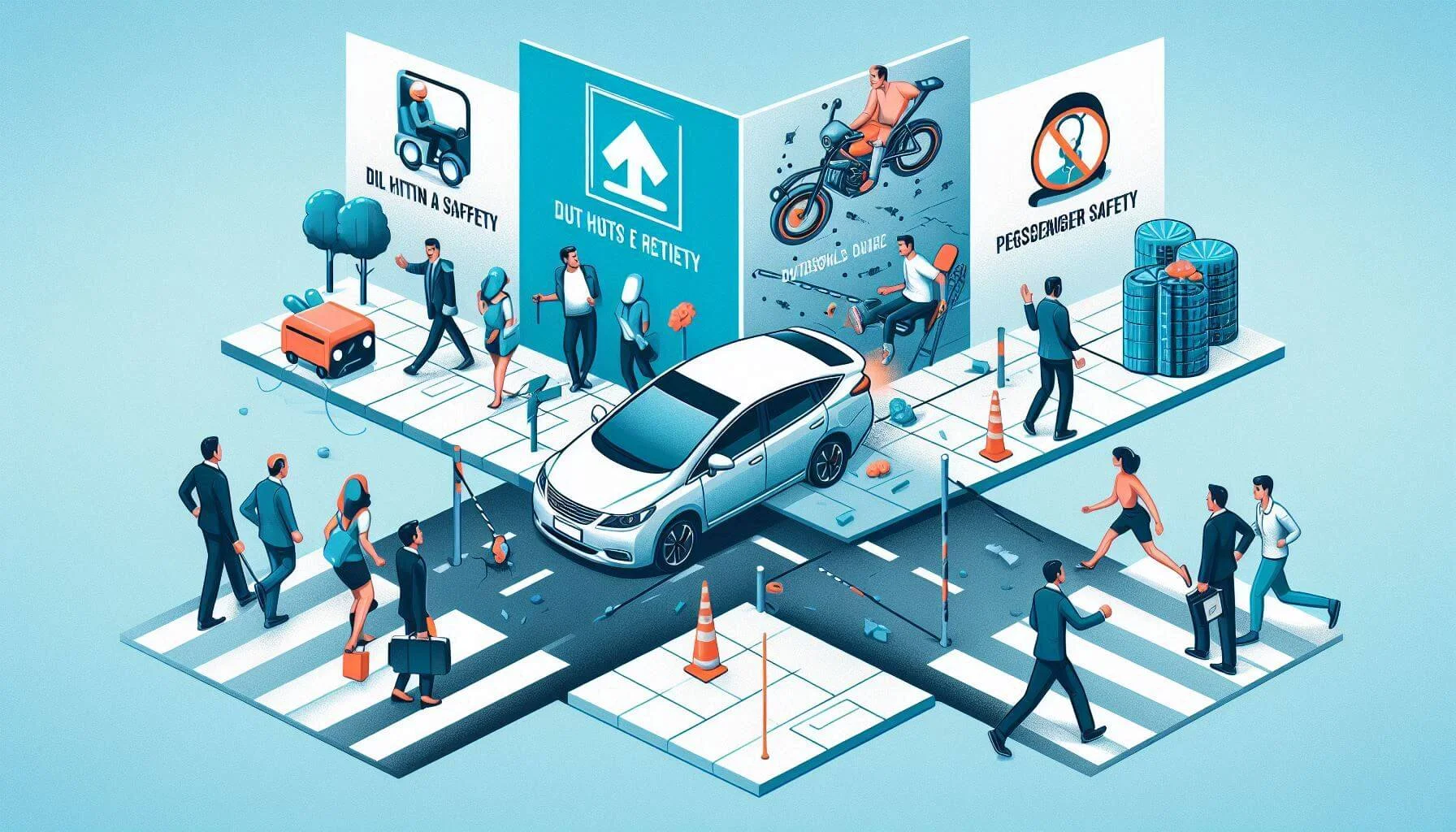
To understand the gravity of ethical dilemmas in self-driving cars, consider the following real-world scenarios:
Choosing Between Two Harmful Outcomes
This situation often mirrors the “trolley problem” in ethics, where the vehicle must decide between two undesirable actions:
- Scenario: A self-driving car encounters a sudden obstacle—a pedestrian crossing the street in front of it. The only alternatives are to:
- Hit the pedestrian, potentially causing severe injury or death.
- Swerve into a wall or another vehicle, risking harm to the car’s passengers.
- Ethical Question: Should the car prioritize the lives of its passengers or the pedestrian? If it opts for the latter, does the number of lives at stake affect the decision?
Prioritizing Passenger Safety vs. Pedestrian Safety
Another recurring dilemma involves balancing the safety of those inside the car with those outside it:
- Scenario: A self-driving car traveling at high speed detects a group of pedestrians jaywalking. To avoid hitting them, the car must make a split-second decision:
- Maintain its course, possibly injuring or killing the pedestrians.
- Swerve off the road, putting its passengers at significant risk.
- Ethical Question: Should the car always protect its passengers, who have entrusted their safety to the vehicle? Or should it prioritize the more vulnerable pedestrians, even if they are breaking traffic rules?
Legal vs. Moral Obligations
Laws sometimes conflict with ethical considerations:
- Scenario: A self-driving car in a no-passing zone encounters a stalled vehicle blocking the road. Legally, the car cannot cross the center line to pass the obstruction. However, staying put creates a hazard for other road users.
- Ethical Question: Should the car violate traffic laws to minimize risk, or strictly adhere to legal requirements despite potential harm?
These scenarios underscore the complexity of programming moral judgment into AVs, as each decision involves trade-offs that may not align with universally accepted ethical norms.
Importance of Addressing These Dilemmas
Gaining Public Trust
Ethical dilemmas are a significant barrier to public acceptance of self-driving cars. People need to trust that these vehicles will make morally sound decisions, especially in life-and-death situations. Without transparent ethical programming, skepticism and fear may prevent widespread adoption.
For instance, surveys have shown that individuals are more likely to support autonomous vehicles if they believe the vehicles prioritize minimizing overall harm. However, trust diminishes if people perceive these decisions as arbitrary or biased.
Meeting Regulatory Requirements
Governments and regulatory bodies worldwide are grappling with how to standardize the ethical frameworks guiding autonomous vehicles. Addressing these dilemmas is essential to gaining regulatory approval and ensuring compliance with legal standards. For example:
- The European Union has issued guidelines emphasizing fairness, transparency, and accountability in AI systems.
- In the United States, organizations like the National Highway Traffic Safety Administration (NHTSA) are working on safety and ethical guidelines for self-driving cars.
Clear, consistent ethical standards are crucial for ensuring that self-driving cars operate safely and responsibly across jurisdictions.
Mitigating Legal and Financial Risks
Failure to address ethical dilemmas can lead to legal disputes, reputational damage, and financial losses for manufacturers. Consider the aftermath of incidents involving AVs, such as the Uber self-driving car fatality in 2018. These events highlight the importance of having well-defined ethical protocols to mitigate risks and protect stakeholders.
Establishing AI’s Role in Society
The way society resolves ethical dilemmas in self-driving cars will set a precedent for other AI applications, from healthcare to criminal justice. Successfully addressing these challenges can pave the way for ethical integration of AI into other critical domains, ensuring that technology serves humanity’s best interests.
By exploring and resolving the ethical dilemmas faced by self-driving cars, we take a crucial step toward ensuring that this transformative technology aligns with human values. It’s a task that requires collaboration among technologists, ethicists, policymakers, and the public to build a future where self-driving cars are not only safe and efficient but also morally responsible.
The Role of Technology in Decision-Making
Self-driving cars rely on advanced technologies like AI and machine learning to navigate roads, interact with other vehicles, and address critical situations. Understanding these technologies is key to appreciating their decision-making capabilities.
AI and Machine Learning
AI (Artificial Intelligence) and machine learning are the backbone of autonomous vehicles, enabling them to process vast amounts of data and make real-time decisions.
How Self-Driving Cars Make Decisions:
- Data Collection: Autonomous vehicles are equipped with an array of sensors, including LiDAR, cameras, radar, and ultrasonic devices. These sensors collect data about the environment, such as traffic patterns, road conditions, and obstacles.
- Data Processing: Using algorithms, the car’s onboard computer analyzes the collected data to interpret the surrounding environment. This includes identifying pedestrians, other vehicles, traffic signs, and potential hazards.
- Decision-Making: Based on pre-programmed rules and learned patterns, the AI system determines the most appropriate action, whether it’s accelerating, braking, or steering away from a hazard. For instance, if a pedestrian suddenly steps onto the road, the system calculates the safest and quickest way to stop or avoid collision.
- Continuous Learning: Over time, self-driving cars can get better thanks to machine learning algorithms. These models analyze previous driving scenarios to enhance decision-making capabilities for future situations.
Challenges in AI-Driven Decision-Making:
- Ambiguity in Ethical Choices: When faced with life-and-death decisions, AI systems struggle to interpret subjective ethical values.
- Data Quality: Errors or biases in training data can lead to flawed decisions.
Pre-Defined Rules vs. Adaptive Learning
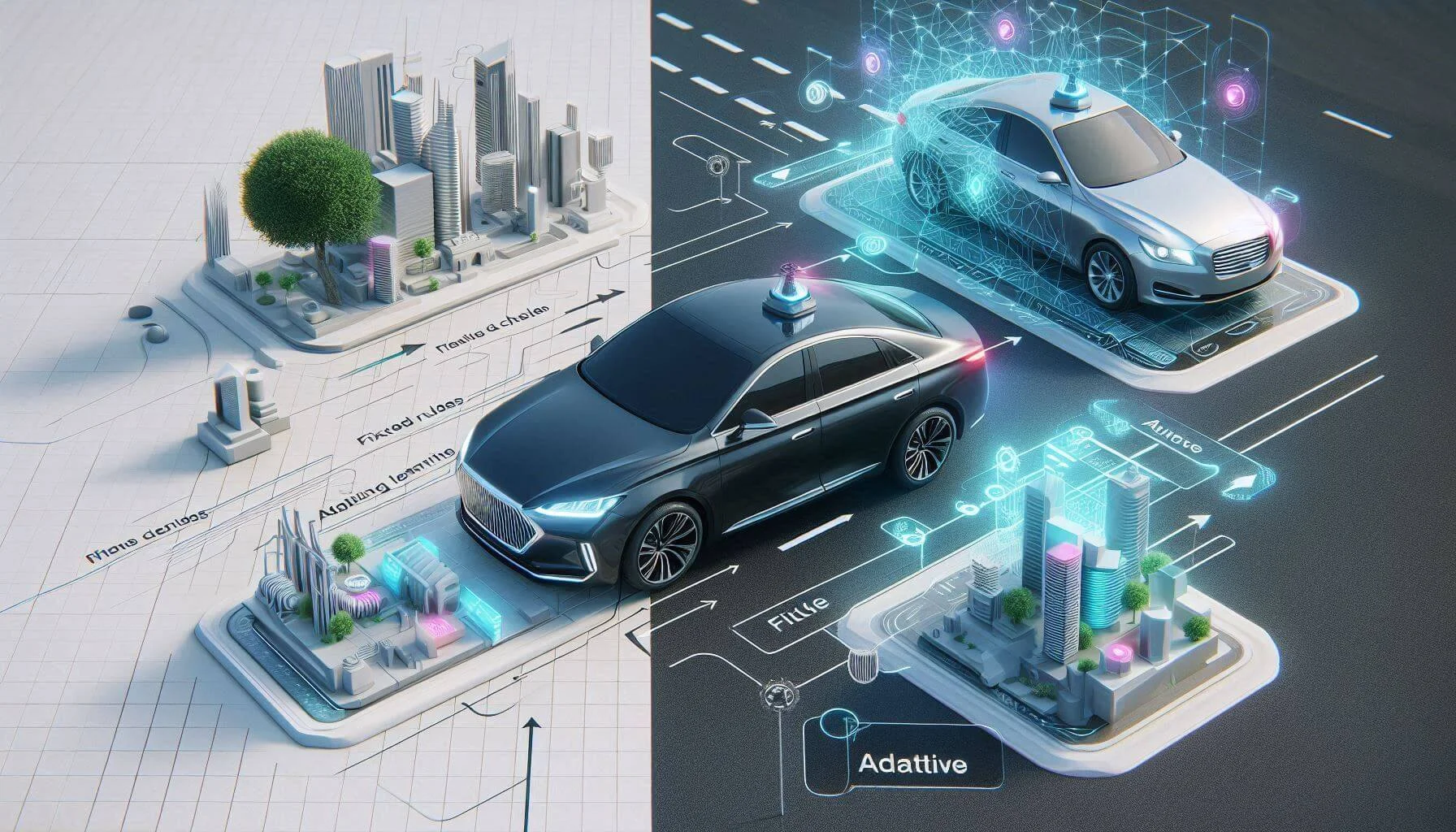
Pre-Defined Ethical Rules
Some argue that self-driving cars should follow strict, pre-determined ethical rules programmed by engineers.
- Advantages:
- Predictability: Ensures consistent behavior in similar scenarios.
- Simplicity: Easier to implement and test.
- Disadvantages:
- Inflexibility: Cannot adapt to unique or unforeseen situations.
- Potential for Bias: Rules reflect the subjective values of those who program them.
Adaptive Learning
Others propose that self-driving cars should use adaptive learning models to evaluate each scenario dynamically.
- Advantages:
- Flexibility: Allows the vehicle to respond intelligently to complex or rare situations.
- Continuous Improvement: Learns from real-world experiences.
- Disadvantages:
- Unpredictability: Public trust may erode if vehicles behave inconsistently.
- Accountability: Difficult to attribute responsibility for decisions made by adaptive systems.
The debate between these two approaches is ongoing, with experts exploring hybrid models that combine fixed ethical rules with adaptive capabilities.
The Role of Data
Importance of Large-Scale Data
To handle complex scenarios, self-driving cars rely on training datasets that represent a wide range of driving conditions and ethical dilemmas.
- Diverse Training Scenarios: AI systems are exposed to simulated and real-world driving data, including adverse weather, varying traffic densities, and unexpected hazards.
- Real-Time Data Analysis: Vehicles continuously gather and analyze data while driving, allowing them to adapt to current conditions.
Ethical Concerns with Data Use
- Bias in Data: If training data is biased (e.g., insufficient representation of minority groups or diverse geographies), the AI may make discriminatory decisions.
- Privacy Issues: The collection of data from passengers and pedestrians raises significant privacy concerns.
Addressing these issues is critical for the responsible deployment of autonomous vehicles.
Who Decides the Ethical Framework?
Establishing an ethical framework for self-driving cars is a complex, multi-stakeholder process that involves manufacturers, governments, society, and philosophical considerations.
Car Manufacturers
Their Role in Ethical Programming
Manufacturers bear primary responsibility for programming the decision-making algorithms of autonomous vehicles.
- Key Considerations:
- Balancing safety, efficiency, and ethics.
- Ensuring transparency in how ethical decisions are made.
- Challenges:
- Conflicting Goals: Maximizing profits while adhering to societal ethical standards.
- Liability: Determining accountability for accidents involving ethical dilemmas.
Some companies, like Tesla and Waymo, are already conducting extensive research on ethical AI for self-driving cars.
Governments and Regulators
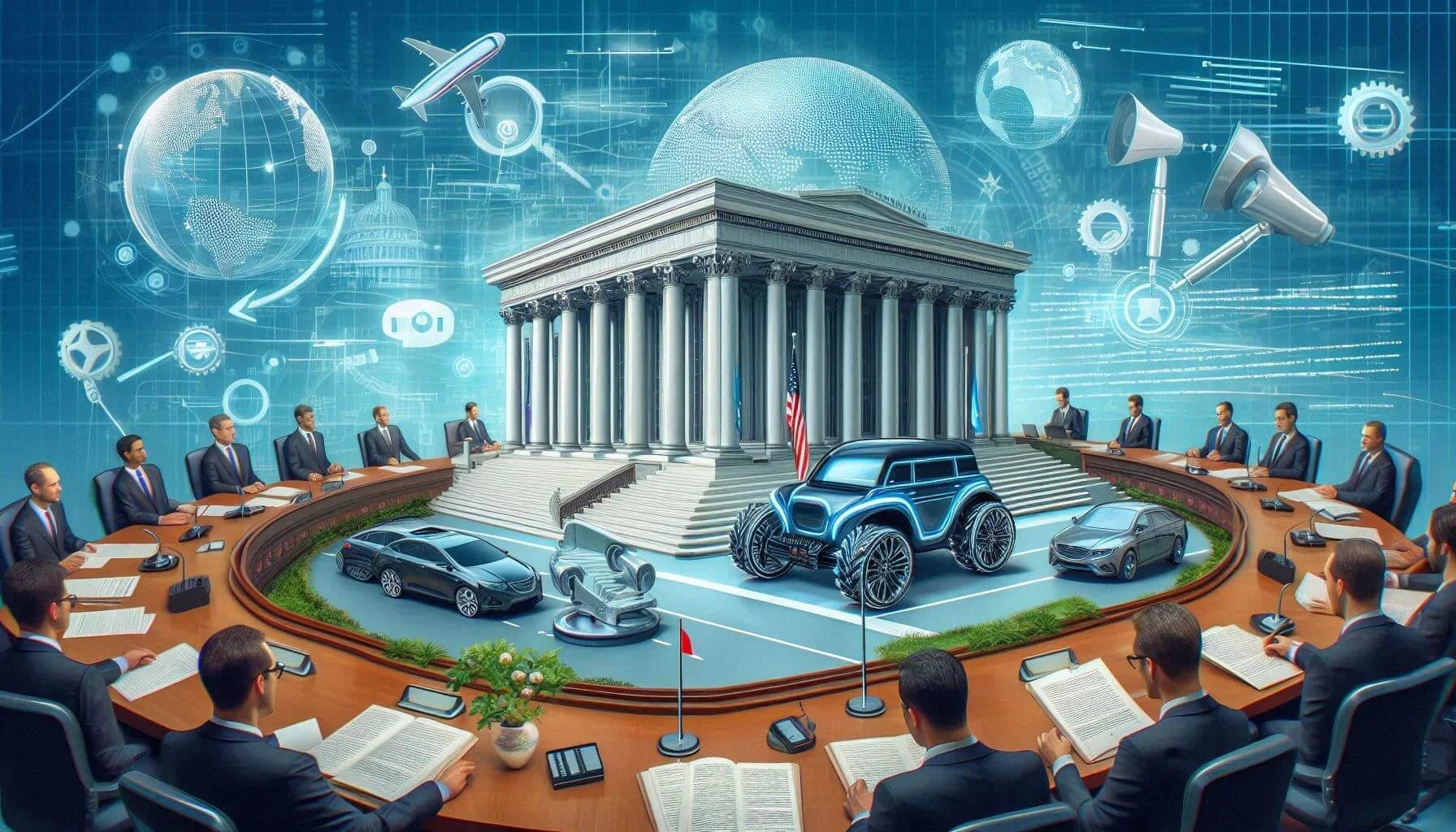
Influence of Laws and Regulations
Governments play a crucial role in defining the ethical boundaries for autonomous vehicles.
- Regulatory Actions:
- Setting safety and ethical standards (e.g., the EU’s AI Act).
- Imposing penalties for non-compliance.
- Challenges for Governments:
- Balancing innovation with public safety.
- Creating universally acceptable ethical guidelines across jurisdictions.
Society’s Role
Public Input on Ethical Standards
The values and expectations of society shape the ethical frameworks of autonomous vehicles. Example: The “Moral Machine” experiment by MIT invited people worldwide to choose the most ethical outcomes in various driving scenarios. Results revealed diverse cultural perspectives on ethics, emphasizing the need for context-sensitive programming.
Benefits of Public Involvement
- Enhances trust in autonomous vehicles.
- Ensures ethical programming reflects societal values rather than corporate interests.
Philosophical Influence
Ethical Theories in Decision-Making:
Philosophical frameworks provide the foundation for ethical programming:
- Utilitarianism: Focuses on minimizing overall harm. For example, if a car must choose between hitting one pedestrian or five, it would opt to hit the one.
- Deontology: Emphasizes following strict moral rules, such as “Do not harm pedestrians,” regardless of the consequences.
- Virtue Ethics: Encourages decisions based on virtuous qualities like compassion and fairness, though it’s harder to program into algorithms.
Each theory has strengths and limitations, and a combination may be required to create fair and effective ethical systems for autonomous vehicles.
Challenges in Defining Universal Ethics
Cultural Differences
Ethical principles are deeply rooted in cultural contexts, and what is considered ethical in one society may not be acceptable in another.
Examples of Cultural Variations:
- Individualism vs. Collectivism:
- In individualistic societies, such as the United States, ethical decisions may prioritize individual rights and freedoms. For example, a self-driving car might be programmed to prioritize passenger safety over pedestrians.
- In collectivist cultures, such as Japan, the emphasis might be on minimizing harm to the broader community, even at the cost of individual passengers.
- Perception of Risk and Responsibility:
- Different societies have varying attitudes toward risk tolerance and liability. Some cultures may prioritize avoiding harm at all costs, while others may accept a degree of risk for the greater good.
Impact on Ethical Programming:
- Cultural differences make it difficult to create a one-size-fits-all ethical framework for self-driving cars.
- Companies may need to localize their algorithms to align with the cultural norms and expectations of specific regions.
Legal Implications
The legal landscape for autonomous vehicles is as fragmented as cultural ethics, with each country having its own regulations and liability frameworks.
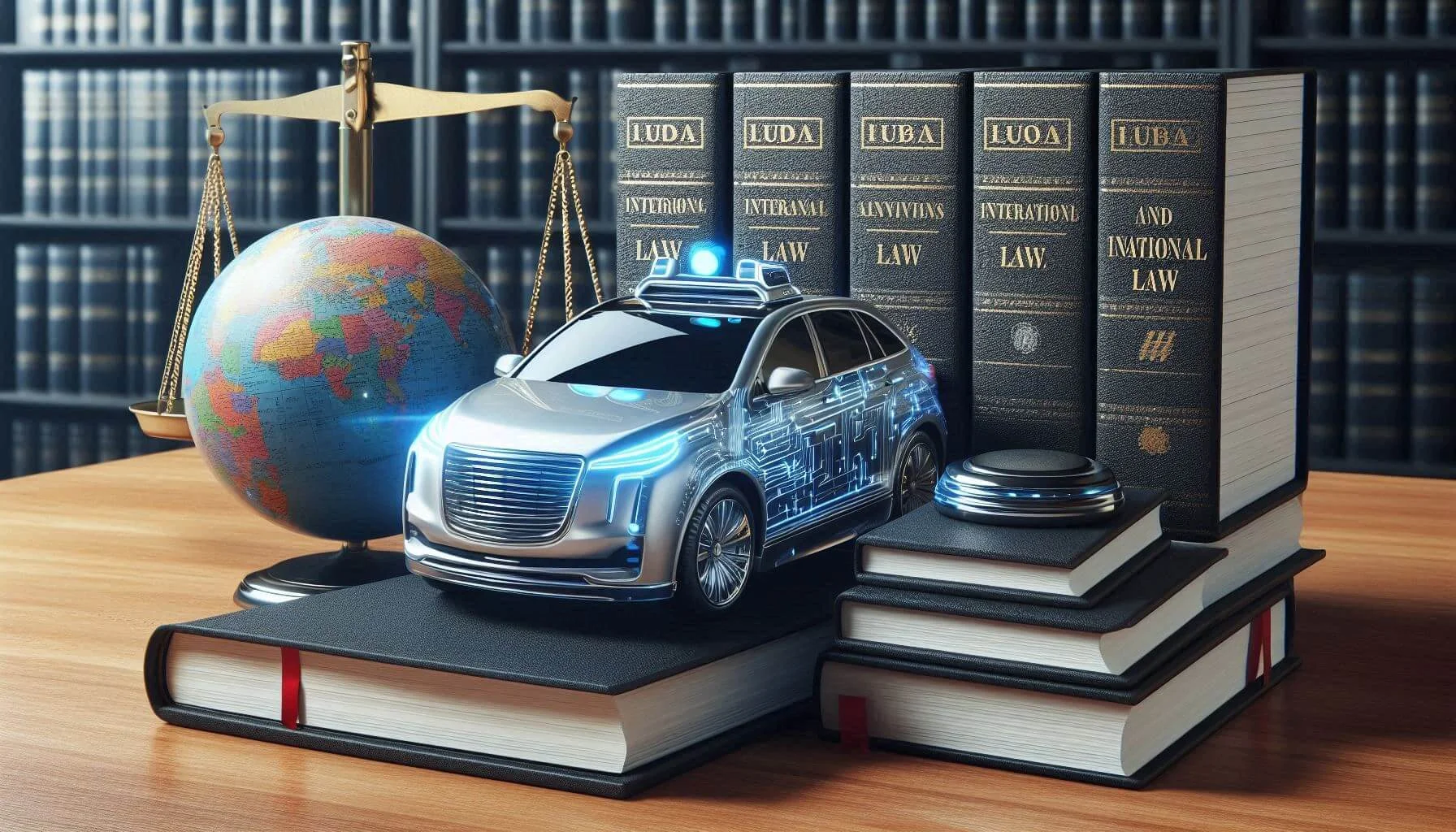
- Key Legal Challenges:
- Differing Traffic Laws: Inconsistent road rules and traffic systems across countries complicate the programming of self-driving cars. For example, right-of-way rules may differ significantly between the U.S. and India.
- Liability and Accountability:
- Determining who is responsible in the event of an accident—whether it’s the manufacturer, software developer, or passenger—varies by jurisdiction.
- Some countries, like Germany, have specific regulations outlining liability for autonomous vehicles, while others are still developing such laws.
- Global Efforts to Harmonize Laws: Organizations like the United Nations are working on standardizing road safety guidelines for autonomous vehicles, but achieving universal consensus remains a challenge.
Technological Limitations
While self-driving technology has advanced significantly, it is still far from perfect when it comes to resolving complex ethical dilemmas.
- Current Constraints:
- Ambiguity in Decision-Making: Autonomous systems struggle with gray areas where ethical decisions involve subjective values. For instance, deciding who to prioritize in a life-threatening scenario remains unresolved.
- Inadequate Real-World Data: Although simulation environments provide a testing ground, they cannot account for every possible real-world scenario, especially rare or unpredictable events.
- Computational Complexity: Resolving ethical dilemmas in milliseconds requires immense computational power and advanced algorithms, which are still in development.
- Future Directions:
- Researchers are exploring hybrid models that combine rule-based programming with adaptive AI to overcome these limitations.
- Continuous advancements in hardware and software will gradually reduce these technological barriers.
Real-World Case Studies and Current Approaches
Tesla, Waymo, and Others
Major companies are actively addressing the ethical and technical challenges of autonomous vehicles, each adopting unique strategies.
- Tesla:
- Tesla’s Autopilot focuses on real-time data collection and over-the-air updates to improve decision-making.
- Ethical dilemmas are managed through a combination of rule-based programming and AI learning from real-world driving data.
- Waymo:
- Waymo emphasizes safety-first principles and has partnered with regulators to align its vehicles’ ethical decisions with local laws.
- It conducts extensive simulations, running billions of virtual miles, to train its AI for diverse scenarios.
- Other Players: Companies like Uber and GM’s Cruise have also invested heavily in addressing ethical issues through partnerships with academia and regulatory bodies.
Regulatory Initiatives
Governments and international organizations are playing a critical role in shaping ethical standards for autonomous vehicles.
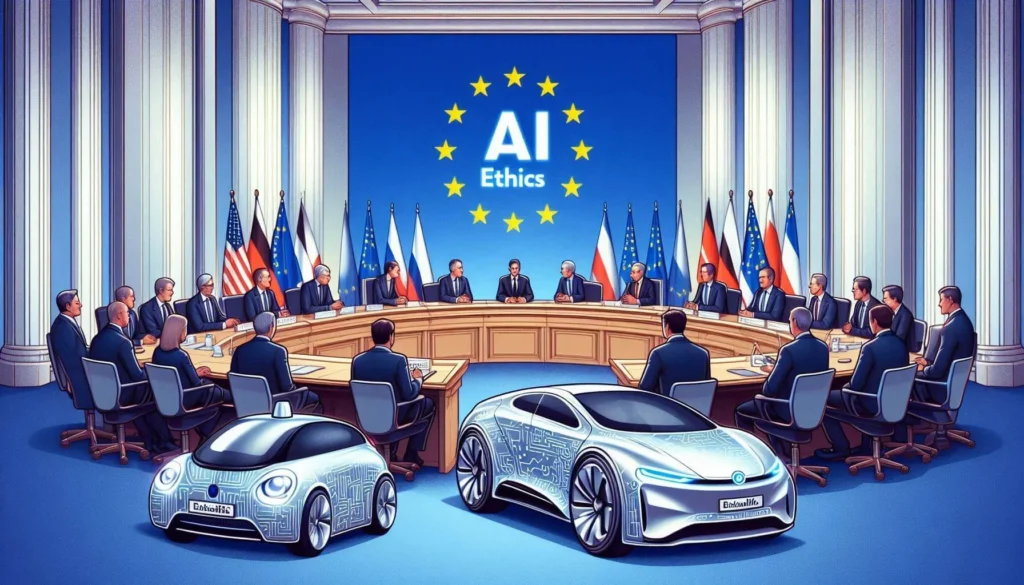
- European Union:
- The EU has introduced ethical AI guidelines to ensure that self-driving cars prioritize human well-being and transparency.
- Countries within the EU are required to align their regulations with these guidelines, creating a unified approach.
- United States:
- The U.S. has adopted a state-by-state approach, with states like California leading in autonomous vehicle regulations.
- Federal agencies like the NHTSA (National Highway Traffic Safety Administration) are working to create national guidelines.
- Global Efforts: The United Nations Economic Commission for Europe (UNECE) is collaborating with member states to create harmonized standards for autonomous vehicle testing and deployment.
Key Incidents and Lessons Learned
Real-world incidents involving self-driving cars have exposed the ethical and technological gaps in their decision-making systems.
- Uber Self-Driving Car Incident (2018): An Uber autonomous vehicle struck and killed a pedestrian in Arizona.
- Lessons Learned:
- The incident highlighted the importance of sensor reliability and ethical decision-making during unexpected situations.
- It underscored the need for better testing and public transparency.
- Lessons Learned:
- Tesla’s Autopilot Accidents: Multiple accidents involving Tesla’s Autopilot have raised concerns about over-reliance on technology and inadequate driver monitoring.
- Lessons Learned:
- Manufacturers must clearly communicate the limitations of autonomous systems to users.
- Enhanced safety protocols, such as driver engagement monitoring, are essential.
- Lessons Learned:
- Waymo’s Ethical Simulations: Waymo has simulated millions of ethical dilemmas to refine its programming.
- Lessons Learned:
- Simulations are valuable but cannot replace real-world testing.
- Collaboration with regulators and public engagement is crucial for ethical programming.
- Lessons Learned:
The Future of Ethics in Self-Driving Cars
Towards Standardized Guidelines
The absence of universal ethical standards in AI programming for self-driving cars has been a significant challenge. However, the future holds promise for global collaboration and standardization.
Potential for Universal Standards
- Collaborative Efforts:
- International organizations like the United Nations and the IEEE are working toward creating universally accepted ethical principles for AI, including self-driving systems.
- These standards aim to harmonize ethical decision-making across countries, ensuring consistency and fairness.
- Adoption of Ethical Frameworks:
- Guidelines like the European Union’s Ethical AI Policy could serve as a blueprint for other regions.
- Autonomous vehicle manufacturers may adopt frameworks that prioritize human safety while adhering to ethical norms.
- Benefits of Standardization:
- Simplifies compliance for manufacturers operating in multiple countries.
- Builds public trust by showcasing a commitment to ethical practices.
Role of Public Involvement
Public opinion will increasingly influence the development of ethical frameworks for autonomous vehicles. As these technologies become integrated into daily life, societal participation will be crucial.
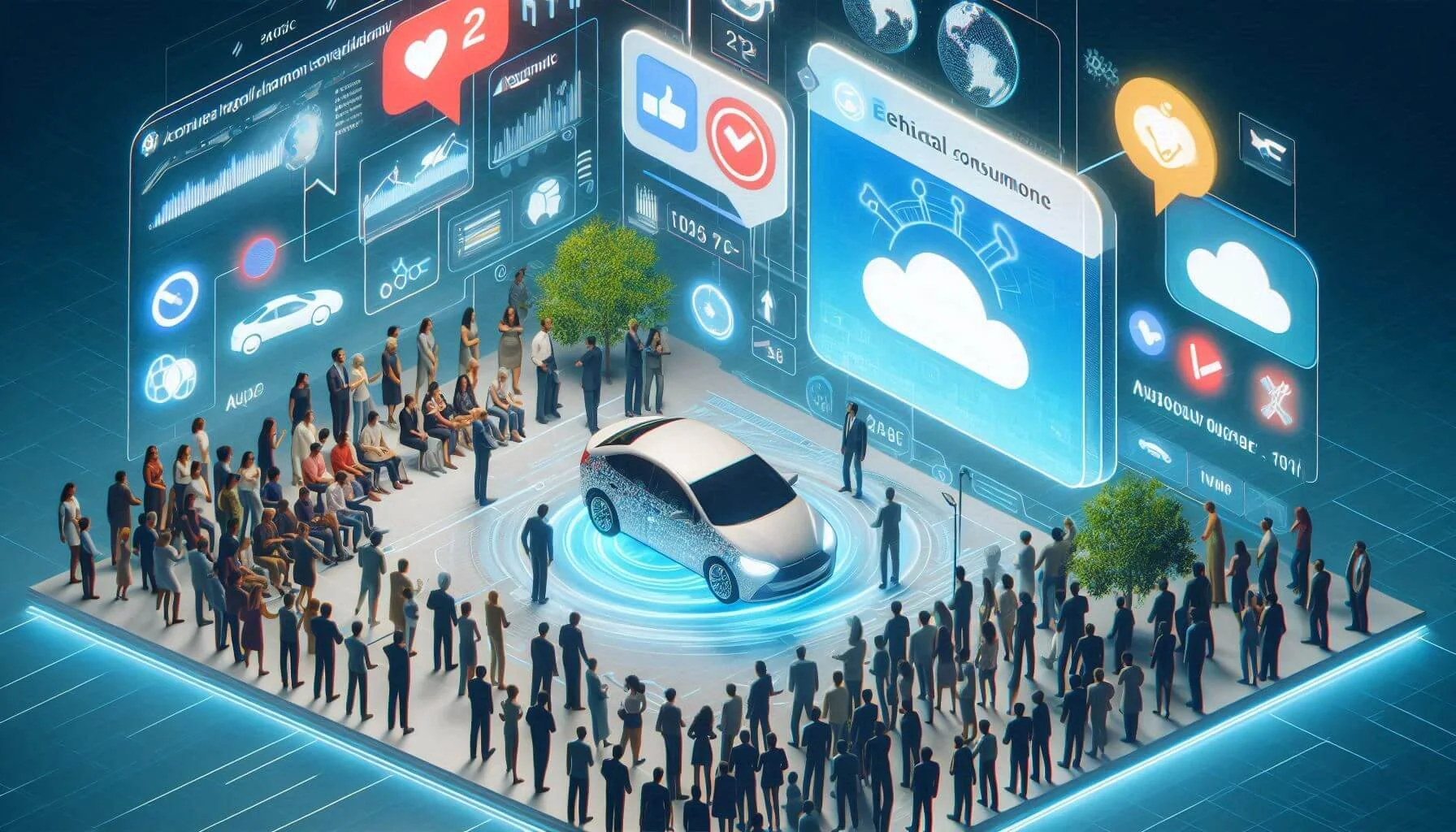
Predicted Growing Role
- Participatory Platforms:
- Initiatives like MIT’s Moral Machine demonstrate how public surveys can help gauge societal values in ethical dilemmas.
- Governments and companies may leverage such platforms to design ethics algorithms that align with public sentiment.
- Informed Decision-Making:
- Awareness campaigns can educate the public on the challenges of ethical programming, fostering meaningful discussions.
- Citizen panels and forums could provide diverse perspectives to shape policy decisions.
- Transparency and Accountability:
- Public involvement ensures transparency in how ethical decisions are programmed, holding manufacturers accountable.
- This openness is essential to gaining consumer trust and wider acceptance of autonomous vehicles.
Balancing Safety and Ethics
As technology advances, the interplay between safety and ethics will become more refined. Future systems aim to achieve a balance where moral principles do not compromise technological safety features.
Exploring the Future Balance
- Enhanced AI Capabilities:
- Machine learning algorithms will become better at predicting and mitigating ethical dilemmas before they occur.
- Real-time decision-making capabilities will improve, reducing the occurrence of split-second moral conflicts.
- Integrated Safety Systems:
- Combining ethical programming with robust safety measures (e.g., redundant braking systems) can minimize harm in critical scenarios.
- Collaborative AI systems may use cloud data to make informed decisions that balance safety and ethics.
- Ethics in System Testing:
- Future testing protocols may simulate complex ethical dilemmas to refine decision-making algorithms.
- Regulatory bodies could mandate ethical certification for self-driving vehicles, ensuring that they meet high safety and moral standards.
Conclusion
Ethical dilemmas in self-driving cars are more than technical challenges; they are critical societal issues that demand attention. As autonomous vehicles near widespread adoption, addressing these dilemmas is vital for building public trust, ensuring safety, and achieving fairness. Without clear ethical frameworks, self-driving technology risks losing credibility and facing regulatory barriers.
Defining ethical standards requires collaboration between governments, manufacturers, and the public. Transparency and regulations are key to aligning AI programming with societal values. “Should machines decide what’s morally right, or should humans remain in control?” is still the main question. The choices made today will shape the future of mobility, safety, and trust, ensuring autonomous cars contribute to an ethical and secure future.

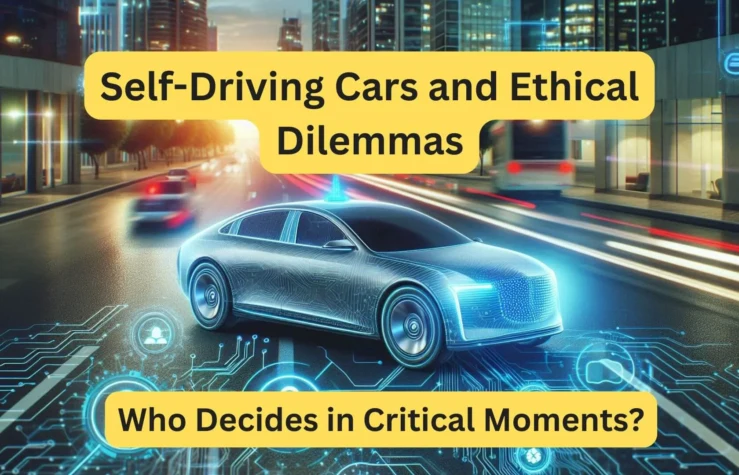

2 Comments